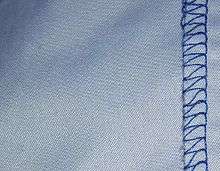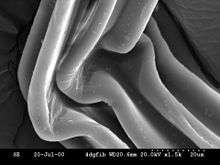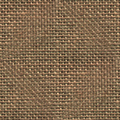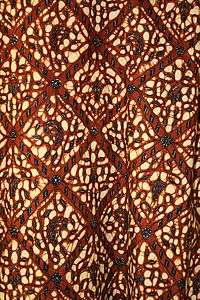Polyester

Polyester is a category of polymers that contain the ester functional group in their main chain. As a specific material, it most commonly refers to a type called polyethylene terephthalate (PET). Polyesters include naturally occurring chemicals, such as in the cutin of plant cuticles, as well as synthetics through step-growth polymerization such as polybutyrate. Natural polyesters and a few synthetic ones are biodegradable, but most synthetic polyesters are not. This material is used very widely in clothing.
Depending on the chemical structure, polyester can be a thermoplastic or thermoset. There are also polyester resins cured by hardeners; however, the most common polyesters are thermoplastics.[1]
Fabrics woven or knitted from polyester thread or yarn are used extensively in apparel and home furnishings, from shirts and pants to jackets and hats, bed sheets, blankets, upholstered furniture and computer mouse mats. Industrial polyester fibers, yarns and ropes are used in tyre reinforcements, fabrics for conveyor belts, safety belts, coated fabrics and plastic reinforcements with high-energy absorption. Polyester fiber is used as cushioning and insulating material in pillows, comforters and upholstery padding. Polyester fabrics are highly stain-resistant— in fact, the only class of dyes which can be used to alter the color of polyester fabric are what are known as disperse dyes.[2]
Polyester fibers are sometimes spun together with natural fibers to produce a cloth with blended properties. Cotton-polyester blends (polycotton) can be strong, wrinkle and tear-resistant, and reduce shrinking. Synthetic fibers in polyester also create materials with water, wind and environmental resistance compared to plant-derived fibers. Cons of cotton and polyester blends include being less breathable than cotton and trapping more moisture while sticking to the skin. They are also less fire resistant and can melt when ignited.[3]
Polyester blends have been renamed so as to suggest their similarity or even superiority to natural fibers (for example, China silk, which is a term in the textiles industry for a 100% polyester fiber woven to resemble the sheen and durability of insect-derived silk).
Polyesters are also used to make bottles, films, tarpaulin, canoes, liquid crystal displays, holograms, filters, dielectric film for capacitors, film insulation for wire and insulating tapes. Polyesters are widely used as a finish on high-quality wood products such as guitars, pianos and vehicle/yacht interiors. Thixotropic properties of spray-applicable polyesters make them ideal for use on open-grain timbers, as they can quickly fill wood grain, with a high-build film thickness per coat. Cured polyesters can be sanded and polished to a high-gloss, durable finish.
Liquid crystalline polyesters are among the first industrially used liquid crystal polymers. They are used for their mechanical properties and heat-resistance. These traits are also important in their application as an abradable seal in jet engines.
Types
Polyesters as thermoplastics may change shape after the application of heat. While combustible at high temperatures, polyesters tend to shrink away from flames and self-extinguish upon ignition. Polyester fibers have high tenacity and E-modulus as well as low water absorption and minimal shrinkage in comparison with other industrial fibers.
Unsaturated polyesters (UPR) are thermosetting resins. They are used as casting materials, fiberglass laminating resins and non-metallic auto-body fillers. Fiberglass-reinforced unsaturated polyesters find wide application in bodies of yachts and as body parts of cars.
According to the composition of their main chain, polyesters can be:
| Main chain composition |
Type | Examples of | |
|---|---|---|---|
| Polyesters | Manufacturing methods | ||
| Aliphatic | Homopolymer | Polyglycolide or polyglycolic acid (PGA) | Polycondensation of glycolic acid |
| Polylactic acid (PLA) | Ring-opening polymerization of lactide | ||
| Polycaprolactone (PCL) | Ring-opening polymerization of caprolactone | ||
| Polyhydroxyalkanoate (PHA) | |||
| Polyhydroxybutyrate (PHB) | |||
| Copolymer | Polyethylene adipate (PEA) | ||
| Polybutylene succinate (PBS) | Polycondensation of succinic acid with 1,4-butanediol | ||
| Poly(3-hydroxybutyrate-co-3-hydroxyvalerate) (PHBV) | Copolymerization of 3-hydroxybutanoic acid and 3-hydroxypentanoic acid, butyrolactone, and valerolactone (oligomeric aluminoxane as a catalyst) | ||
| Semi-aromatic | Copolymer | Polyethylene terephthalate (PET) | Polycondensation of terephthalic acid with ethylene glycol |
| Polybutylene terephthalate (PBT) | Polycondensation of terephthalic acid with 1,4-butanediol | ||
| Polytrimethylene terephthalate (PTT) | Polycondensation of terephthalic acid with 1,3-propanediol | ||
| Polyethylene naphthalate (PEN) | Polycondensation of at least one naphthalene dicarboxylic acid with ethylene glycol | ||
| Aromatic | Copolymer | Vectran | Polycondensation of 4-hydroxybenzoic acid and 6-hydroxynaphthalene-2-carboxylic acid |
Increasing the aromatic parts of polyesters increases their glass transition temperature, melting temperature, thermal stability, chemical stability...
Polyesters can also be telechelic oligomers like the polycaprolactone diol (PCL) and the polyethylene adipate diol (PEA). They are then used as prepolymers.
Industry
Basics
Polyester is a synthetic polymer made of purified terephthalic acid (PTA) or its dimethyl ester dimethyl terephthalate (DMT) and monoethylene glycol (MEG). With 18% market share of all plastic materials produced, it ranges third after polyethylene (33.5%) and polypropylene (19.5%).
The main raw materials are described as follows:
- Purified terephthalic acid (PTA) CAS-No.: 100-21-0
- Synonym: 1,4 benzenedicarboxylic acid,
Sum formula: C6H4(COOH)2, mol. weight: 166.13 - Dimethylterephthalate (DMT) CAS-No.: 120-61-6
- Synonym: 1,4 benzenedicarboxylic acid dimethyl ester,
Sum formula: C6H4(COOCH3)2, mol. weight: 194.19 - Mono-ethylene glycol (MEG) CAS No.: 107-21-1
- Synonym: 1,2 ethanediol,
Sum formula: C2H6O2 , mol. weight: 62.07
To make a polymer of high molecular weight a catalyst is needed. The most common catalyst is antimony trioxide (or antimony tri-acetate):
- Antimony trioxide (ATO) CAS-No.: 1309-64-4
- mol. weight: 291.51,
Sum formula: Sb2O3
In 2008, about 10,000 tonnes Sb2O3 were used to produce around 49 million tonnes polyethylene terephthalate.
Polyester is described as follows:
- Polyethylene terephthalate CAS-No.: 25038-59-9
- Synonyms/abbreviations: polyester, PET, PES,
Sum formula: H-[C10H8O4]-n=60–120 OH, mol. unit weight: 192.17
There are several reasons for the importance of polyester:
- The relatively easy accessible raw materials PTA or DMT and MEG
- The very well understood and described simple chemical process of polyester synthesis
- The low toxicity level of all raw materials and side products during polyester production and processing
- The possibility to produce PET in a closed loop at low emissions to the environment
- The outstanding mechanical and chemical properties of polyester
- The recyclability
- The wide variety of intermediate and final products made of polyester.
In the following table, the estimated world polyester production is shown. Main applications are textile polyester, bottle polyester resin, film polyester mainly for packaging and specialty polyesters for engineering plastics. According to this table, the world's total polyester production might exceed 50 million tons per annum before the year 2010.
| Product type | 2002 (million tonnes/year) | 2008 (million tonnes/year) |
|---|---|---|
| Textile-PET | 20 | 39 |
| Resin, bottle/A-PET | 9 | 16 |
| Film-PET | 1.2 | 1.5 |
| Special polyester | 1 | 2.5 |
| Total | 31.2 | 59 |
Polyester processing
After the first stage of polymer production in the melt phase, the product stream divides into two different application areas which are mainly textile applications and packaging applications. In the following table, the main applications of textile and packaging of polyester are listed.
| Textile | Packaging |
|---|---|
| Staple fiber (PSF) | Bottles for CSD, water, beer, juice, detergents, etc. |
| Filaments POY, DTY, FDY | A-PET film |
| Technical yarn and tire cord | Thermoforming |
| Non-woven and spunbond | biaxial-oriented film (BO-PET) |
| Mono-filament | Strapping |
Abbreviations:
- PSF
- Polyester-staple fiber;
- POY
- Partially oriented yarn;
- DTY
- Draw-textured yarn;
- FDY
- Fully drawn yarn;
- CSD
- Carbonated soft drink;
- A-PET
- Amorphous polyester film;
- BO-PET
- Biaxial-oriented polyester film;
A comparable small market segment (much less than 1 million tonnes/year) of polyester is used to produce engineering plastics and masterbatch.
In order to produce the polyester melt with a high efficiency, high-output processing steps like staple fiber (50–300 tonnes/day per spinning line) or POY /FDY (up to 600 tonnes/day split into about 10 spinning machines) are meanwhile more and more vertically integrated direct processes. This means the polymer melt is directly converted into the textile fibers or filaments without the common step of pelletizing. We are talking about full vertical integration when polyester is produced at one site starting from crude oil or distillation products in the chain oil → benzene → PX → PTA → PET melt → fiber/filament or bottle-grade resin. Such integrated processes are meanwhile established in more or less interrupted processes at one production site. Eastman Chemicals were the first to introduce the idea of closing the chain from PX to PET resin with their so-called INTEGREX process. The capacity of such vertically integrated production sites is >1000 tonnes/day and can easily reach 2500 tonnes/day.
Besides the above-mentioned large processing units to produce staple fiber or yarns, there are ten thousands of small and very small processing plants, so that one can estimate that polyester is processed and recycled in more than 10 000 plants around the globe. This is without counting all the companies involved in the supply industry, beginning with engineering and processing machines and ending with special additives, stabilizers and colors. This is a gigantic industry complex and it is still growing by 4–8% per year, depending on the world region.
Synthesis
Synthesis of polyesters is generally achieved by a polycondensation reaction. See "condensation reactions in polymer chemistry". The general equation for the reaction of a diol with a diacid is :
- (n+1) R(OH)2 + n R´(COOH)2 → HO[ROOCR´COO]nROH + 2n H2O
Azeotrope esterification
In this classical method, an alcohol and a carboxylic acid react to form a carboxylic ester. To assemble a polymer, the water formed by the reaction must be continually removed by azeotrope distillation.
Alcoholic transesterification

Acylation (HCl method)
The acid begins as an acid chloride, and thus the polycondensation proceeds with emission of hydrochloric acid (HCl) instead of water. This method can be carried out in solution or as an enamel.
- Silyl method
- In this variant of the HCl method, the carboxylic acid chloride is converted with the trimethyl silyl ether of the alcohol component and production of trimethyl silyl chloride is obtained
Acetate method (esterification)
- Silyl acetate method
Ring-opening polymerization
Aliphatic polyesters can be assembled from lactones under very mild conditions, catalyzed anionically, cationically or metallorganically. A number of catalytic methods for the copolymerization of epoxides with cyclic anhydrides have also recently been shown to provide a wide array of functionalized polyesters, both saturated and unsaturated.
Biodegradation
The futuro house was made of fibreglass-reinforced polyester plastic; polyester-polyurethane, and poly(methylmethacrylate) one of them was found to be degrading by Cyanobacteria and Archaea.[4][5]
Cross-linking
Unsaturated polyesters are thermosetting resins. They are generally copolymers prepared by polymerizing one or more diol with saturated and unsaturated dicarboxylic acids (maleic acid, fumaric acid...) or their anhydrides. The double bond of unsaturated polyesters reacts with a vinyl monomer, usually styrene, resulting in a 3-D cross-linked structure. This structure acts as a thermoset. The exothermic cross-linking reaction is initiated through a catalyst, usually an organic peroxide such as methyl ethyl ketone peroxide or benzoyl peroxide.
Environmental concerns
Pollution of freshwater and seawater habitats
A team at Plymouth University in the UK spent 12 months analysing what happened when a number of synthetic materials were washed at different temperatures in domestic washing machines, using different combinations of detergents, to quantify the microfibres shed. They found that an average washing load of 6 kg could release an estimated 137,951 fibres from polyester-cotton blend fabric, 496,030 fibres from polyester and 728,789 from acrylic.[6][7][8]
See also
References
- ↑ Rosato, Dominick V.; Rosato, Donald V.; Rosato, Matthew V. (2004). Plastic product material and process selection handbook. Elsevier. p. 85. ISBN 978-1-85617-431-2.
- ↑ Schuler, Mattias J. (1981). "Part 8: Dyeing with disperse dyes". Dyeing Primer. AATCC. p. 21. GGKEY:SK3T00EYAFR.
- ↑ Mendelson, Cheryl (17 May 2005). Home Comforts: The Art and Science of Keeping House. Simon and Schuster. ISBN 9780743272865.
- ↑ Cappitelli F; Principi P; Sorlini C. (Aug 2006). "Biodeterioration of modern materials in contemporary collections: can biotechnology help?". Trends in biotechnology. 24 (8): 350–4. doi:10.1016/j.tibtech.2006.06.001. PMID 16782219.
- ↑ Rinaldi, Andrea (7 November 2006). "Saving a fragile legacy. Biotechnology and microbiology are increasingly used to preserve and restore the worlds cultural heritage". EMBO Reports. 7 (11): 1075–1079. doi:10.1038/sj.embor.7400844. PMC 1679785
 . PMID 17077862.
. PMID 17077862. - ↑ O'Connor, Mary Catherine (27 October 2014) Inside the lonely fight against the biggest environmental problem you've never heard of. The Guardian
- ↑ Williams, Alan. "Washing clothes releases thousands of microplastic particles into environment, study shows". Plymouth University. Retrieved 9 October 2016.
- ↑ Napper, I. E.; Thompson, R. C. (2016). "Release of Synthetic Microplastic Plastic Fibres From Domestic Washing Machines: Effects of Fabric Type and Washing Conditions". Marine Pollution Bulletin. 112 (1–2): 39–45. doi:10.1016/j.marpolbul.2016.09.025. PMID 27686821.
Further reading
- Textiles, by Sara Kadolph and Anna Langford. 8th Edition, 1998.
External links
- Polyester manufacturing process
- Lipase catalyzed polyesterification: Enzyme-Catalyzed Polymerization of End-Functionalized Polymers in a Microreactor



.svg.png)